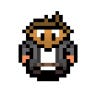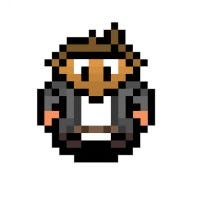A Games Beginnings: Design
One of the most important aspects to designing a game is determining how you are going to present your concept to your team. If you aren't able to properly organize and communicate your ideas then your team won't be able to create the game as you see it.

Something I wish I had learned while I was in school was how to create a proper design document. An all encompassing, everything and the kitchen sink document that outlines every last detail of your game. The game design class I took was brand new, taught by an instructor for the Communication Arts department and there was an unspoken assumption everyone in the class could draw, so having very limited drawing skills I found myself at somewhat of a disadvantage. Though I was able to distinguish myself through concept design and 3D art assets I found my inability to provide concept art was putting me seriously behind because it took me considerably longer to get my point across.
Now I really see how much the process of creating a design document could have filled in what I was unable to get across in my horrid attempts at drawing. The assumption for this article is you have a basic understanding of the type of game you’d like to play, and that you have no idea what time of game we are working on (heh).
Step 1: Start with a basic document
A short summary about the style of game you are making and a brief summary of the story. This section should continue into the visual style and audio components you’d like to include.
*The order of how you present the information is really up to you, but it will most likely depend on the type of game you make. The example I am using for this is a game with strong character design and a strong focus on exciting game play so we use that as a basic outline.*
Moving on from visual style we find game play, what actions can your character perform and do those actions behave differently throughout the game based on your surroundings. Running on ice and running on dirt could/should have two different characteristics. If your game focuses on movement more than fighting than define the different types of movements you have, if opposite then define the available attacks. Can you pick anything up along the way to help your character or does level progression (either story or character) offer anything new to the player? What are the controls? What kind of GUI will the player see?
Immediately after defining game play we went into playable character design, the initial step for this is just defining each character and offering a brief bio about them. Descriptions for their appearance would also be useful here for the benefit of the artists.
Next, the environment and level design section will let you define how many levels you want in your game, how each level will look and the basic building blocks for those levels. Will you have moving platforms, are there traditional levels 1, 2, and 3 or towns to explore? If it’s towns to explore than in what order should you be expected to discover each town and what sort of things will happen? What sort of enemies will you encounter in each town/level? What sort of hazards besides enemies can kill you?
Last we get into things like game features. Menus, scoring system, different play modes (single player/co-op), achievements and so on; how will starting a new game be initiated and any of the game features be accessed through the menu.
Huzzah! You have a first draft of a design document. At this point our doc was about 30 pages or so, steps two and three brought us up to about 90 by filling in more detail about each of the previous sections. The document continues to grow and once we are ready to start the development process we can just pass this document, which will likely be over 125 pages, along to the art and code teams for what will hopefully be an extremely smooth game creation process.
*And for the love of all that can be considered holy in the game design field, please learn how to use all the features of Microsoft Office (word and excel especially).*
About the Author(s)
You May Also Like







.jpeg?width=700&auto=webp&quality=80&disable=upscale)








